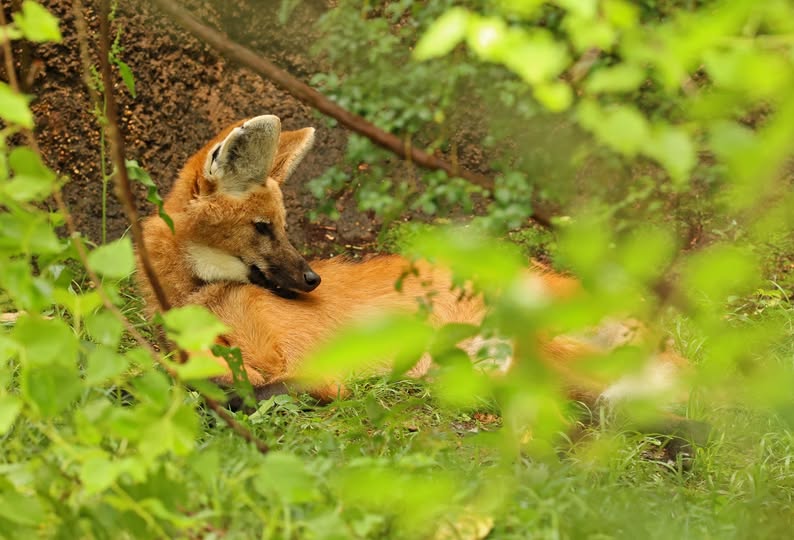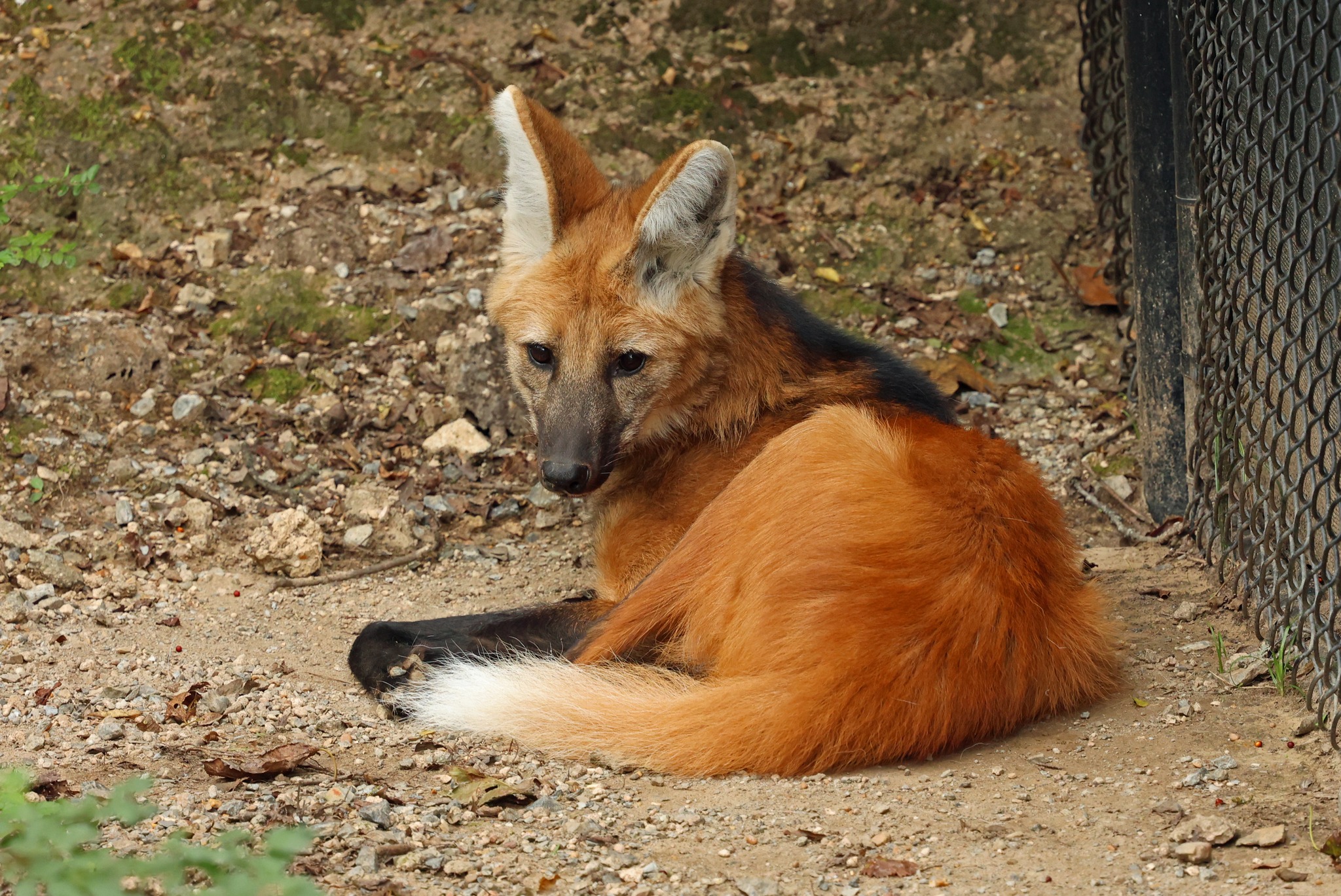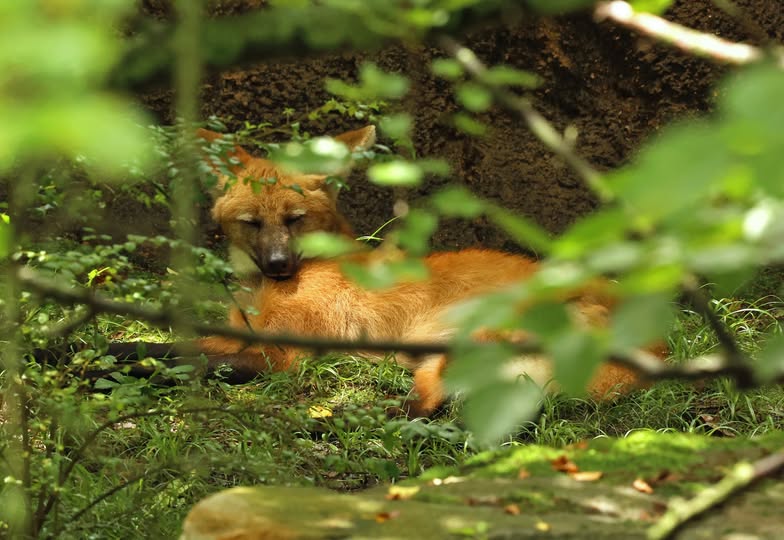Maned Wolves
NEAR THREATENED



Native to South America, Maned Wolves are known for their distinctive appearance, featuring long, slender legs, a reddish-brown fur coat, and a distinctive black mane that runs down their neck and back. Despite their name, Maned Wolves are not true wolves and are the only species in the genus Chrysocyon. They inhabit grasslands, savannas, and shrublands, where they primarily hunt small mammals, birds, and reptiles. However, their diet also includes fruits and vegetables, making them omnivorous.
- Maned wolf urine has a powerful aroma, reminding many humans of the way skunks smell.
- The maned wolf is the largest canid of South America. It looks more like a long-legged fox than a wolf. Genetic studies show that it is neither fox nor true wolf, but a distinct species. It is the only member of its genus, Chrysocyon.
- Unlike other canids, maned wolves lead a solitary life; although a pair may share a large home range of up to 17 square miles (44 square kilometers), each member hunts independently.
The IUCN Red List of Threatened Species lists maned wolves as near threatened. However, the Brazilian Red List and the U.S. Fish and Wildlife Service Endangered Species List lists maned wolves as endangered.
Habitat destruction for agriculture and highways is the main threat to maned wolves. Sometimes maned wolves are killed for their body parts, which are believed to have magical properties. Domestic dogs pose threats through direct persecution and disease transmission.
Photos by Karen Caster



